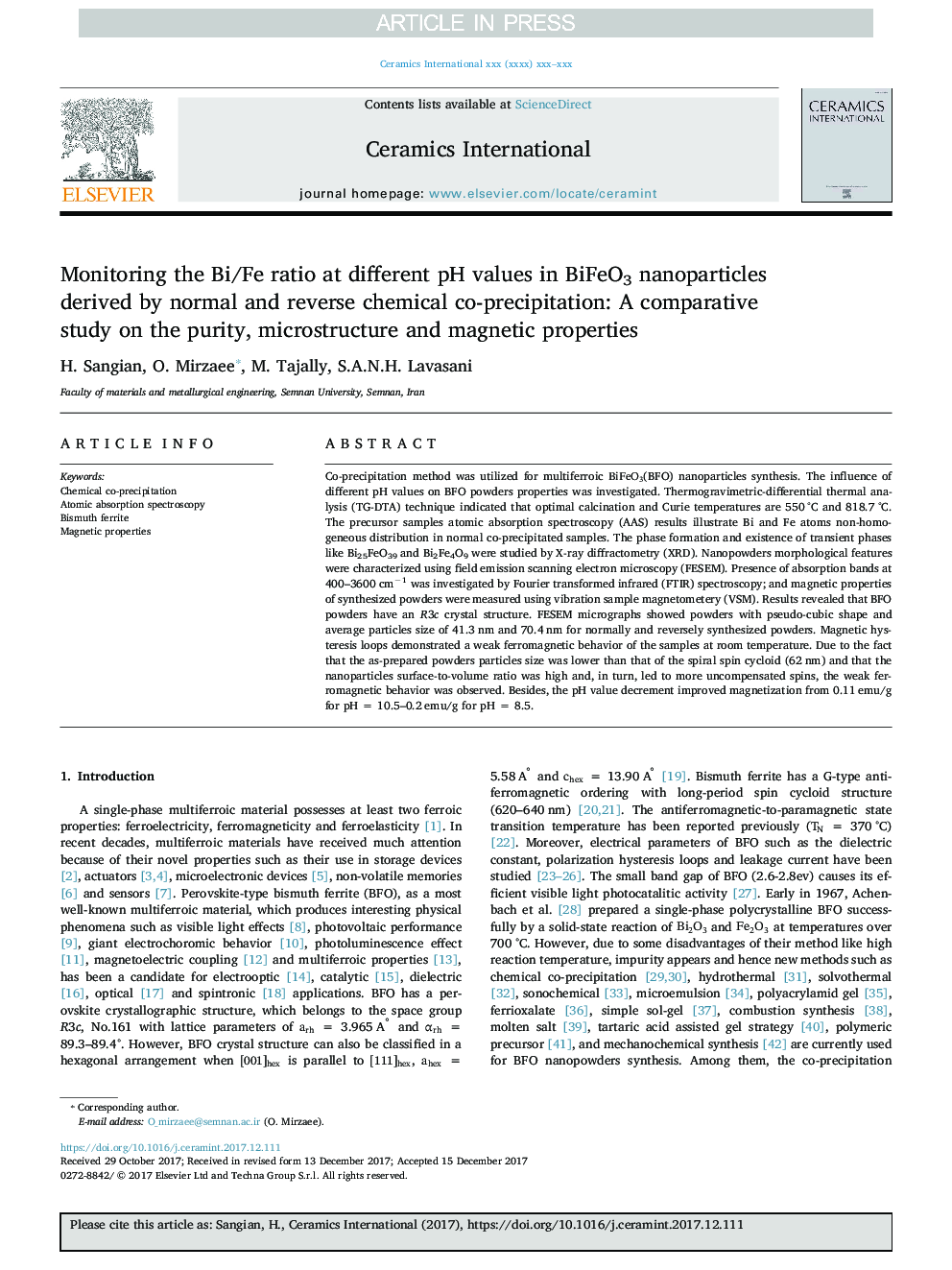| Article ID | Journal | Published Year | Pages | File Type |
|---|---|---|---|---|
| 7888380 | Ceramics International | 2018 | 7 Pages |
Abstract
Co-precipitation method was utilized for multiferroic BiFeO3(BFO) nanoparticles synthesis. The influence of different pH values on BFO powders properties was investigated. Thermogravimetric-differential thermal analysis (TG-DTA) technique indicated that optimal calcination and Curie temperatures are 550 °C and 818.7 °C. The precursor samples atomic absorption spectroscopy (AAS) results illustrate Bi and Fe atoms non-homogeneous distribution in normal co-precipitated samples. The phase formation and existence of transient phases like Bi25FeO39 and Bi2Fe4O9 were studied by X-ray diffractometry (XRD). Nanopowders morphological features were characterized using field emission scanning electron microscopy (FESEM). Presence of absorption bands at 400-3600 cmâ1 was investigated by Fourier transformed infrared (FTIR) spectroscopy; and magnetic properties of synthesized powders were measured using vibration sample magnetometery (VSM). Results revealed that BFO powders have an R3c crystal structure. FESEM micrographs showed powders with pseudo-cubic shape and average particles size of 41.3 nm and 70.4 nm for normally and reversely synthesized powders. Magnetic hysteresis loops demonstrated a weak ferromagnetic behavior of the samples at room temperature. Due to the fact that the as-prepared powders particles size was lower than that of the spiral spin cycloid (62 nm) and that the nanoparticles surface-to-volume ratio was high and, in turn, led to more uncompensated spins, the weak ferromagnetic behavior was observed. Besides, the pH value decrement improved magnetization from 0.11 emu/g for pH = 10.5-0.2 emu/g for pH = 8.5.
Related Topics
Physical Sciences and Engineering
Materials Science
Ceramics and Composites
Authors
H. Sangian, O. Mirzaee, M. Tajally, S.A.N.H. Lavasani,
